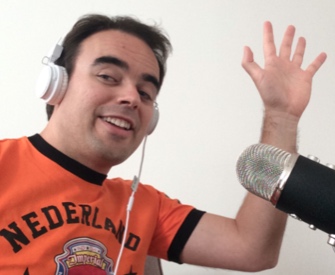Appelboor (apple corer) and other typical Dutch items
CLICK HERE to subscribe to my Youtube channel
There are things about the Netherlands that most people know. I am talking about the stereotypical things that pop up when you talk about the Netherlands.
- The small houses and the canals in Amsterdam
- The colour orange
- The royal family
- The tulips at Keukenhof
- Weed and the red light district
- The tall, blond and stingy Dutch people.
But there is another category of things that is typically Dutch …
And this category is less known. It’s really funny to confront foreigners with items from this category, because 9 times out of 10 they have no clue what the things are.
Not only foreigners or students from the Dutch summer school find this funny, even for Dutch people it’s confronting! But for a different reason.
Typical daily life Dutch items – Dutch people are surprised!
These typical Dutch items are really common in the Netherlands. It’s not just that they’re in every household, but almost everyone knows these things.
The Dutch, as they see themselves as cosmopolitan, don’t know these things are typical examples of Dutch life.
Why are they typically Dutch?
It’s not easy to say exactly what about all these items make them typically Dutch.
- Most of them are used in everyday life
- They are easy to use
- It’s mostly about being efficient
- And they have to do with making this gezellig!
Let’s start with the one from the video above, the appelboor.
The appelboor (apple corer)
An apple corer is a kitchen aid with which the core of a whole apple can be removed.
Not strange that we have an item specifically for the apple, because – as in other western European countries – the apple is the most eaten fruit.
The apple corer is used when one wants to make recipes with apples in which the fruit is used as a whole, as is the case with appelbollen (baked apples). But also for the use of apples in other recipes, such as appelflappen (apple fritters).
Also it makes it easier for children to eat apples.
Let’s take a look at some other typical items we’ve talked about.
Washandje
A little wash hand. That’s the meaning of washandje. It’s a shorter version of the word ’washandschoen’.
A handschoen (hand shoe) is a glove.
So what is a washandje?
A washcloth is a piece of terry cloth in the shape of a bag in which the hand fits. It is used as an aid for washing the body, for example to apply soap to the body and then remove it again. It can also be used to refresh the face.
The Dutch toilet
The Dutch toilet. Dutch people are used to it. The fact is, they don’t even know they are using a ‘Dutch toilet’.
It’s just a toilet.
What is the typical Dutch toilet?
The bowl has a unique shape which includes a sort of shelf, a little bit above the water level.
Or as one of the students says in the video, ‘there’s an extra step, before the little pond at the bottom of your toilet’.
What most Dutch people don’t know is that this toilet is something typically Dutch.
For a lot of people coming to the Netherlands it’s an unpleasant surprise.
Carrots
Carrots? Typical Dutch item?
I understand why this would raise some questions.
Let me explain.
You probably know that the colour orange is related to the Dutch and the Netherlands. This colour has been the national colour since the time of Willem van Oranje. You can see it in tourist information, the colour of sports outfits and, well, actually almost anything that is related to the Dutch identity.
So now there’s an orange carrot. And is this because of the Dutch king?
The original carrots were not orange at all, they used to be white or purple. The current orange carrot is the result of cross breeding. The first carrots came from Iran and were brought to the Netherlands by the V.O.C. in the 17th century. The carrot was ‘crossed’ in the Netherlands until it had the orange colour.
Was it because of the royal family? Maybe; that’s uncertain.
It might also have been that it looked better. And also, thinking about economics, better to sell. But it was done by the Dutch.
Flessenlikker
A flessenlikker, sometimes referred to as ‘flessenschraper’ (bottle scraper), consists of a long handle with a rubber spatula at the end and it helps you to get every last scrap from a bottle or jar. It is usually used for the last bit of yoghurt, vla (Dutch custard) or pindakaas (peanut butter).
Some sources claim that the flessenlikker is a Norwegian invention, but the Netherlands is the only country where this household utensil has become really popular.
Why is it so popular in the Netherlands?
The Dutch would say that the flessenlikker is a success because you can get more out of your jar. An economical way of living; nothing wrong with that, right?
On the other hand, the Dutch are known as cheap and stingy, especially in our neighbouring countries, Belgium and Germany. The use of the flessenlikker is for them another example of the Dutch trying to get as much as possible out of the least expenditure.
Klompen (clogs / wooden shoes)
In the Netherlands we only see people in the countryside walking in wooden shoes. Traditionally these are painted yellow, although there are many variations. People who walk in wooden shoes find them warm, safe and comfortable. But if you are wearing them for the first time, you will not be likely to experience this pleasant feeling, as most new walkers get blisters.
This is a typical Dutch item, that’s true. But, sorry, in normal life, people don’t really wear them anymore. I hope I haven’t crushed your image of the Netherlands.
Gourmetten
Gourmetten is an activity in which a group of people sit at the table and cook their own dishes in small pans. And what are they cooking? You can use the different ingredients that are on the table.
For a lot of Dutch people this is the idea for a gezellig Kerstmis.

Bart de Pau
online Dutch teacher & founder of the Dutch Summer School & Dutch Winter School


